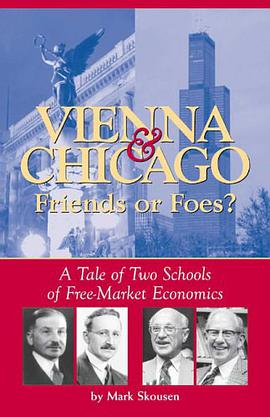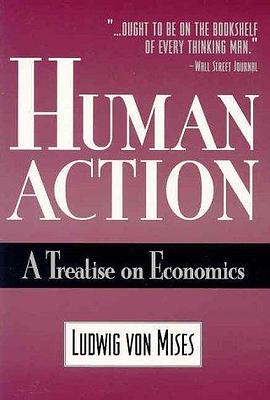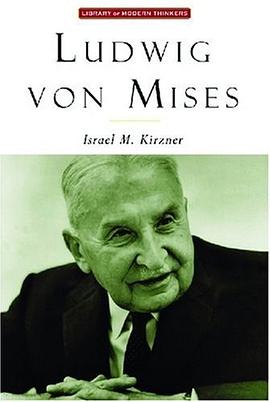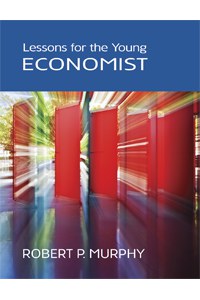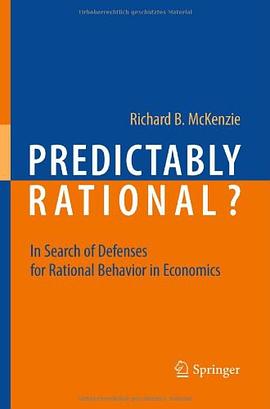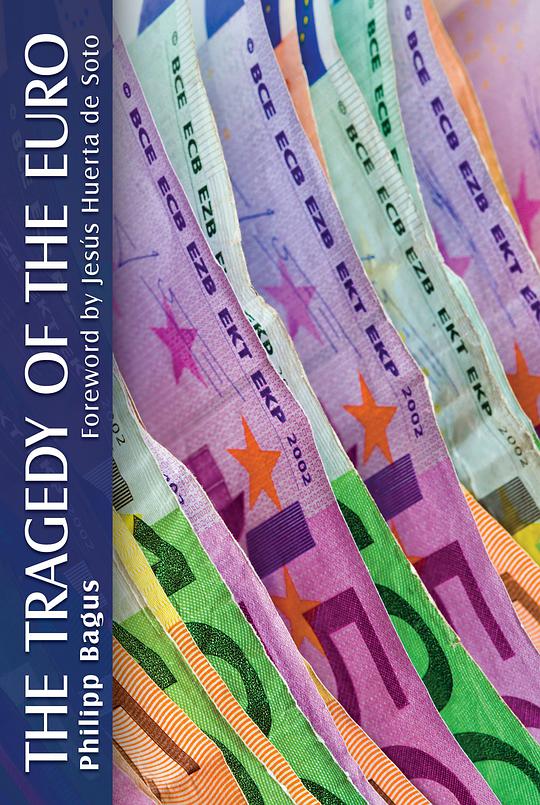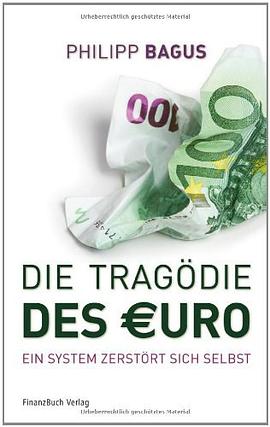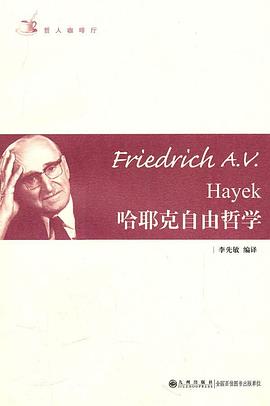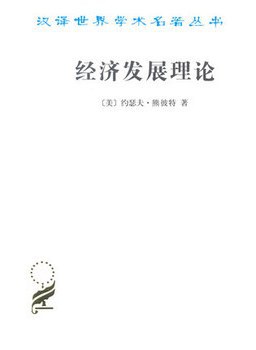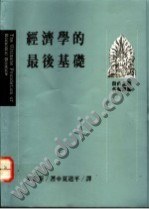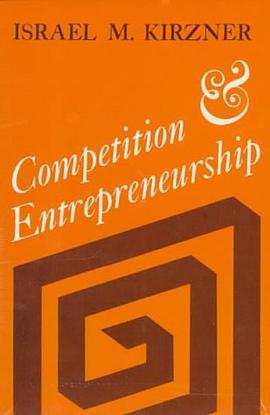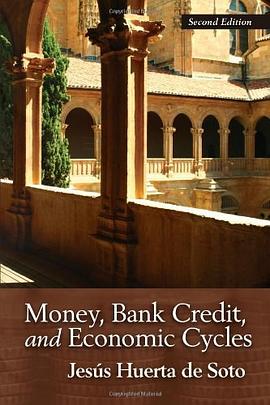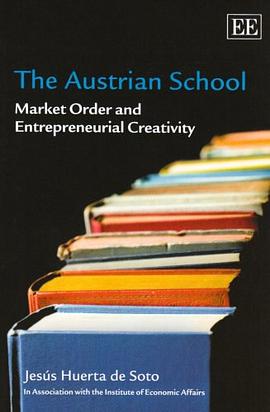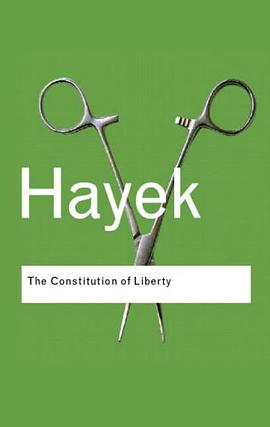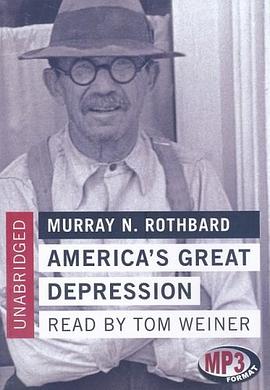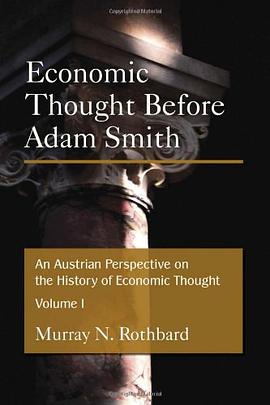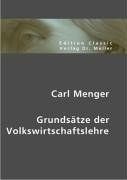奧地利學派
Vienna & Chicago, Friends or Foes? 豆瓣
作者:
Mark Skousen
Capital Press
2005
- 7
In his new book, "Vienna and Chicago, Friends or Foes?" economist and author Mark Skousen debates the Austrian and Chicago schools of free-market economics, two schools in constant, heated disagreement in their theories of money, business cycle, government policy, and methodology.
Human Action 豆瓣
作者:
Ludwig von Mises
Fox & Wilkes
1996
- 7
Ludwig Von Mises 豆瓣
作者:
Israel M. Kirzner
Intercollegiate Studies Institute
2001
- 6
Lessons for the Young Economist 豆瓣
作者:
Murphy, Robert P.
Ludwig von Mises Institute
2010
- 10
We are beyond mere excitement about Lessons for the Young Economist. It is easily the best introduction to economics for the young reader—because it covers both pure economic theory and also how markets work (the domain of most introductory books).
Robert Murphy has the right frame of mind and mastery of the subject matter to provide the best possible pedagogy. The logic is super clear. The organization is impeccable. It achieves a great balance between “plain old” economics and that aspect of economic thought that is considered particularly Austrian. Therefore, it prepares the student for both conventional economic studies in the future and provides the logical rigor and policy clarity that only the Austrian School perspective can offer.
Most of the attempts at such texts falter because they are either too dry and technical for the young reader or they are littered with attempts to keep the student entertained with references to pop culture or cheesy passages that attempt to “speak the child’s language” but only end up sounding patronizing.
Dr. Murphy’s text has none of this. The prose has relentless fire without needless fireworks. What drives it forward is intellectual passion born of his love of the topic. What’s also nice is that he is nowhere self-consciously trying to sound like someone he is not. It is his real voice, explaining everything point by point. For this reason, the text is warm and engaging.
Here is the product of vast experience and daily writing. This permits the voicing of the book to achieve a remarkable integration page to page, chapter to chapter. Though he is drawing from the whole history of the development of economics, the text ends up being strikingly original. His approach is not based on anything but his own sense of how to teach this subject.
This book will not be boring or useless even for people who think they already know the subject. Every page or two, there are fresh insights. For example, on the problems with barter, he shows that in the real world, most goods and services would not have come into existence at all (so that there would be no trading of tractors for cobbler services because there would be no tractors or repairable shoes). In another place, he points out that one of the advantages of the division of labor is that it makes the advantages of automation more readily apparent.
Maybe these points appear in other introductory texts but the way he works them into a logical and seamless system is very impressive. It has a much larger market than just high-school students. Anyone can enjoy this book and learn from it. The appropriate age here is probably 13 and up but any adult will love this book.
Murphy wrote the first study guides to Human Action and Man, Economy, and State. He can now add another medal to his chest. It is a big one. There is every reason to believe that this book will still have powerful legs decades from now.
As for the price, it is close to being a miracle for a textbook of this size and expanse. The conventional publishers of bad books at high prices don't stand a chance against this landmark.
Robert Murphy has the right frame of mind and mastery of the subject matter to provide the best possible pedagogy. The logic is super clear. The organization is impeccable. It achieves a great balance between “plain old” economics and that aspect of economic thought that is considered particularly Austrian. Therefore, it prepares the student for both conventional economic studies in the future and provides the logical rigor and policy clarity that only the Austrian School perspective can offer.
Most of the attempts at such texts falter because they are either too dry and technical for the young reader or they are littered with attempts to keep the student entertained with references to pop culture or cheesy passages that attempt to “speak the child’s language” but only end up sounding patronizing.
Dr. Murphy’s text has none of this. The prose has relentless fire without needless fireworks. What drives it forward is intellectual passion born of his love of the topic. What’s also nice is that he is nowhere self-consciously trying to sound like someone he is not. It is his real voice, explaining everything point by point. For this reason, the text is warm and engaging.
Here is the product of vast experience and daily writing. This permits the voicing of the book to achieve a remarkable integration page to page, chapter to chapter. Though he is drawing from the whole history of the development of economics, the text ends up being strikingly original. His approach is not based on anything but his own sense of how to teach this subject.
This book will not be boring or useless even for people who think they already know the subject. Every page or two, there are fresh insights. For example, on the problems with barter, he shows that in the real world, most goods and services would not have come into existence at all (so that there would be no trading of tractors for cobbler services because there would be no tractors or repairable shoes). In another place, he points out that one of the advantages of the division of labor is that it makes the advantages of automation more readily apparent.
Maybe these points appear in other introductory texts but the way he works them into a logical and seamless system is very impressive. It has a much larger market than just high-school students. Anyone can enjoy this book and learn from it. The appropriate age here is probably 13 and up but any adult will love this book.
Murphy wrote the first study guides to Human Action and Man, Economy, and State. He can now add another medal to his chest. It is a big one. There is every reason to believe that this book will still have powerful legs decades from now.
As for the price, it is close to being a miracle for a textbook of this size and expanse. The conventional publishers of bad books at high prices don't stand a chance against this landmark.
Predictably Rational? 豆瓣
作者:
Richard B. McKenzie
Springer
2009
- 11
Tragedy of the Euro 豆瓣
作者:
Philipp Bagus
Ludwig von Mises Institute
2010
Die Tragödie des Euro 豆瓣
作者:
Philipp Bagus
FinanzBuch Verlag
2011
- 8
经济发展理论 豆瓣
作者:
[美国] 约瑟夫·熊彼特
译者:
何畏
/
易家详
…
商务印书馆
1990
- 1
《经济发展理论》一书是约瑟夫·熊彼特早期成名之作。熊彼特在这本著作里首先提出的“创新理论”,当时曾轰动西方经济学界,并且一直享有盛名。此书最先以德文发表于1912年,修订再版于1926年,越数年又重印了德文第三版。 1934年,以德文修订本为依据的英译本,由美国哈佛大学出版社出版,被列为(哈佛经济丛书)第46卷。现在的中译本,据此英译本译出。
熊彼特的《经济发展理论》以 “对于利润、资本、信贷、利息和经济周期的考察”作为副标题,涉猎范围可谓极其广泛。但是书中最具特色和最引人注目的,还是他所提出的“创新理论”。
全书共分为六章。
第一、第二两章最为重要,从静止状态的“循环流转”到经济发展的根本现象,特别是第二章 ,对经济发展,包括从“企业家”的特点和功能、 “生产要素的新组合”、“创新”的涵义和作用,直到资本主义的产生,熊彼特都作了开创性的精辟的论述,既是理论上的探讨,也是历史发展过程的概述。
第三、 四、五各章则进一步分别阐述了信贷与资本,企业家利润,以及资本的利息。我们可以概括地说,“创新理论”就是熊彼特“经济发展理论”的核心。
熊彼特的《经济发展理论》以 “对于利润、资本、信贷、利息和经济周期的考察”作为副标题,涉猎范围可谓极其广泛。但是书中最具特色和最引人注目的,还是他所提出的“创新理论”。
全书共分为六章。
第一、第二两章最为重要,从静止状态的“循环流转”到经济发展的根本现象,特别是第二章 ,对经济发展,包括从“企业家”的特点和功能、 “生产要素的新组合”、“创新”的涵义和作用,直到资本主义的产生,熊彼特都作了开创性的精辟的论述,既是理论上的探讨,也是历史发展过程的概述。
第三、 四、五各章则进一步分别阐述了信贷与资本,企业家利润,以及资本的利息。我们可以概括地说,“创新理论”就是熊彼特“经济发展理论”的核心。
Competition and Entrepreneurship 豆瓣
作者:
Israel M. Kirzner
University Of Chicago Press
1978
- 9
Stressing verbal logic rather than mathematics, Israel M. Kirzner provides at once a thorough critique of contemporary price theory, an essay on the theory of entrepreneurship, and an essay on the theory of competition. "Competition and Entrepreneurship" offers a new appraisal of quality competition, of selling effort, and of the fundamental weaknesses of contemporary welfare economics.
Kirzner's book establishes a theory of the market and the price system which differs from orthodox price theory. He sees orthodox price theory as explaining the configuration of prices and quantities that satisfied the conditions for equilibrium. Mr. Kirzner argues that "it is "more" useful to look to price theory to help understand how the decisions of individual participants in the market interact to generate the market forces which compel changes in prices, outputs, and methods of production and in the allocation of resources."
Although "Competition and Entrepreneurship" is primarily concerned with the operation of the market economy, Kirzner's insights can be applied to crucial aspects of centrally planned economic systems as well. In the analysis of these processes, Kirzner clearly shows that the rediscovery of the entrepreneur must emerge as a step of major importance.
Kirzner's book establishes a theory of the market and the price system which differs from orthodox price theory. He sees orthodox price theory as explaining the configuration of prices and quantities that satisfied the conditions for equilibrium. Mr. Kirzner argues that "it is "more" useful to look to price theory to help understand how the decisions of individual participants in the market interact to generate the market forces which compel changes in prices, outputs, and methods of production and in the allocation of resources."
Although "Competition and Entrepreneurship" is primarily concerned with the operation of the market economy, Kirzner's insights can be applied to crucial aspects of centrally planned economic systems as well. In the analysis of these processes, Kirzner clearly shows that the rediscovery of the entrepreneur must emerge as a step of major importance.
Money, Bank Credit, and Economic Cycles 豆瓣
作者:
Jesus Huerta de Soto
Ludwig von Mises Institute
2009
- 4
Can the market fully manage the money and banking sector?
Jesús Huerta de Soto, professor of economics at the Universidad Rey Juan Carlos, Madrid, has made history with this mammoth and exciting treatise that it has and can again, without inflation, without business cycles, and without the economic instability that has characterized the age of government control.
Such a book as this comes along only once every several generations: a complete comprehensive treatise on economic theory. It is sweeping, revolutionary, and devastating--not only the most extended elucidation of Austrian business cycle theory to ever appear in print but also a decisive vindication of the Misesian-Rothbardian perspective on money, banking, and the law.
Jörg Guido Hülsmann has said that this is the most significant work on money and banking to appear since 1912, when Mises's own book was published and changed the way all economists thought about the subject.
Its five main contributions:
a wholesale reconstruction of the legal framework for money and banking, from the ancient world to modern times,
an application of law-and-economics logic to banking that links microeconomic analysis to macroeconomic phenomena,
a comprehensive critique of fractional-reserve banking from the point of view of history, theory, and policy,
an application of the Austrian critique of socialism to central banking,
the most comprehensive look at banking enterprise from the point of view of market-based entrepreneurship.
Those are the main points but, in fact, this only scratches the surface. Indeed, it would be difficult to overestimate the importance of this book. De Soto provides also a defense of the Austrian perspective on business cycles against every other theory, defends the 100% reserve perspective from the point of view of Roman and British law, takes on the most important objections to full reserve theory, and presents a full policy program for radical reform.
It was Hülsmann's review of the Spanish edition that inspired the translation that led to this Mises Institute edition in English. The result is astonishing: an 875-page masterpiece that utterly demolishes the case for fiat currency and central banking, and shows that these institutions have compromised economic stability and freedom, and, moreover, are intolerable in a free society.
De Soto has set new scholarly standards with this detailed discussion of monetary reform from an Austro-libertarian point of view. Huerta de Soto s solid elaboration of his arguments along these lines makes his treatise a model illustration of the Austrian approach to the study of the relationship between law and economics.
It could take a decade for the full implications of this book to be absorbed but this much is clear: all serious students of these subject matters will have to master this treatise.
Jesús Huerta de Soto, professor of economics at the Universidad Rey Juan Carlos, Madrid, has made history with this mammoth and exciting treatise that it has and can again, without inflation, without business cycles, and without the economic instability that has characterized the age of government control.
Such a book as this comes along only once every several generations: a complete comprehensive treatise on economic theory. It is sweeping, revolutionary, and devastating--not only the most extended elucidation of Austrian business cycle theory to ever appear in print but also a decisive vindication of the Misesian-Rothbardian perspective on money, banking, and the law.
Jörg Guido Hülsmann has said that this is the most significant work on money and banking to appear since 1912, when Mises's own book was published and changed the way all economists thought about the subject.
Its five main contributions:
a wholesale reconstruction of the legal framework for money and banking, from the ancient world to modern times,
an application of law-and-economics logic to banking that links microeconomic analysis to macroeconomic phenomena,
a comprehensive critique of fractional-reserve banking from the point of view of history, theory, and policy,
an application of the Austrian critique of socialism to central banking,
the most comprehensive look at banking enterprise from the point of view of market-based entrepreneurship.
Those are the main points but, in fact, this only scratches the surface. Indeed, it would be difficult to overestimate the importance of this book. De Soto provides also a defense of the Austrian perspective on business cycles against every other theory, defends the 100% reserve perspective from the point of view of Roman and British law, takes on the most important objections to full reserve theory, and presents a full policy program for radical reform.
It was Hülsmann's review of the Spanish edition that inspired the translation that led to this Mises Institute edition in English. The result is astonishing: an 875-page masterpiece that utterly demolishes the case for fiat currency and central banking, and shows that these institutions have compromised economic stability and freedom, and, moreover, are intolerable in a free society.
De Soto has set new scholarly standards with this detailed discussion of monetary reform from an Austro-libertarian point of view. Huerta de Soto s solid elaboration of his arguments along these lines makes his treatise a model illustration of the Austrian approach to the study of the relationship between law and economics.
It could take a decade for the full implications of this book to be absorbed but this much is clear: all serious students of these subject matters will have to master this treatise.
The Austrian School 豆瓣
作者:
Jesús Huerta de Soto
Edward Elgar Publishing
2008
- 8
The Constitution of Liberty 豆瓣
作者:
F. A. Hayek
Routledge
2006
- 9
"One of the great political works of our time, . . . the twentieth-century successor to John Stuart Mill's essay, 'On Liberty.'"—Henry Hazlitt, Newsweek
"A reflective, often biting, commentary on the nature of our society and its dominant thought by one who is passionately opposed to the coercion of human beings by the arbitrary will of others, who puts liberty above welfare and is sanguine that greater welfare will thereby ensue."—Sidney Hook, New York Times Book Review
In this classic work Hayek restates the ideals of freedom that he believes have guided, and must continue to guide, the growth of Western civilization. Hayek's book, first published in 1960, urges us to clarify our beliefs in today's struggle of political ideologies.
"A reflective, often biting, commentary on the nature of our society and its dominant thought by one who is passionately opposed to the coercion of human beings by the arbitrary will of others, who puts liberty above welfare and is sanguine that greater welfare will thereby ensue."—Sidney Hook, New York Times Book Review
In this classic work Hayek restates the ideals of freedom that he believes have guided, and must continue to guide, the growth of Western civilization. Hayek's book, first published in 1960, urges us to clarify our beliefs in today's struggle of political ideologies.
America's Great Depression 豆瓣
作者:
Murray N. Rothbard
Blackstone Audiobooks, Inc.
2008
- 5
Austrian Perspective on the History of Economic Thought 豆瓣
作者:
Murray N. Rothbard
Ludwig von Mises Institute
2006
- 2
Grundsätze der Volkswirtschaftslehre 豆瓣
作者:
Carl Menger
Vdm Verlag Dr. Müller
2006
- 6


